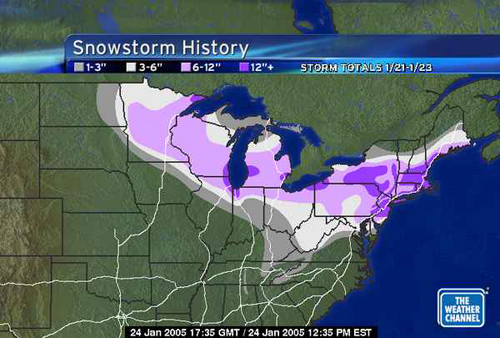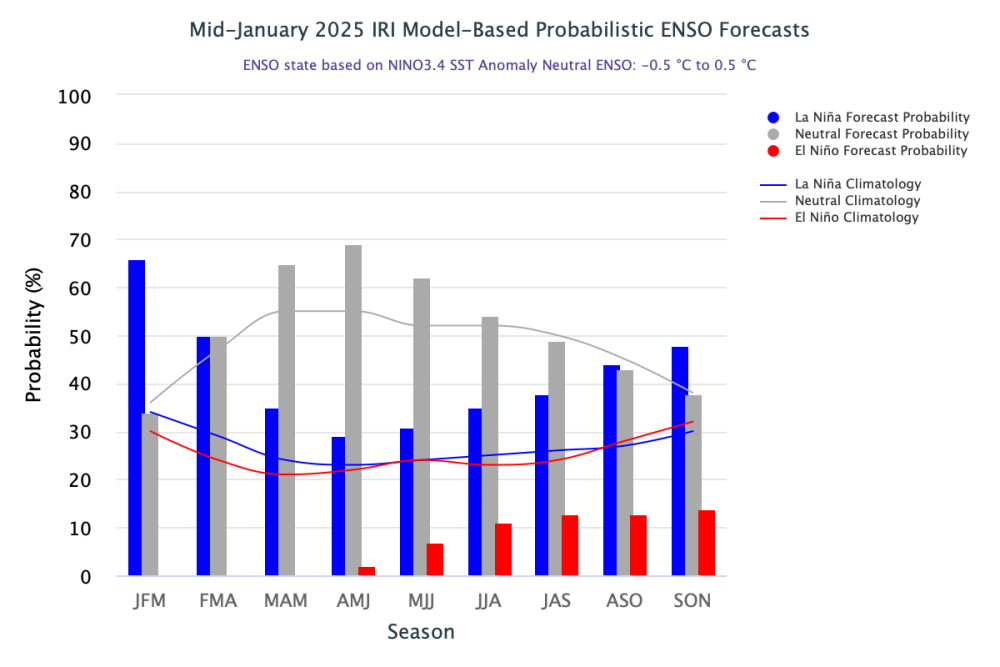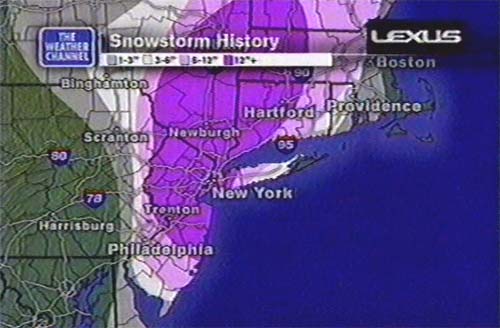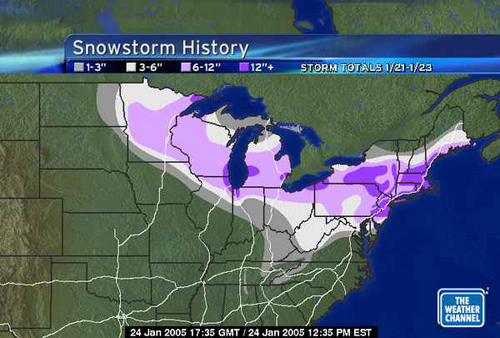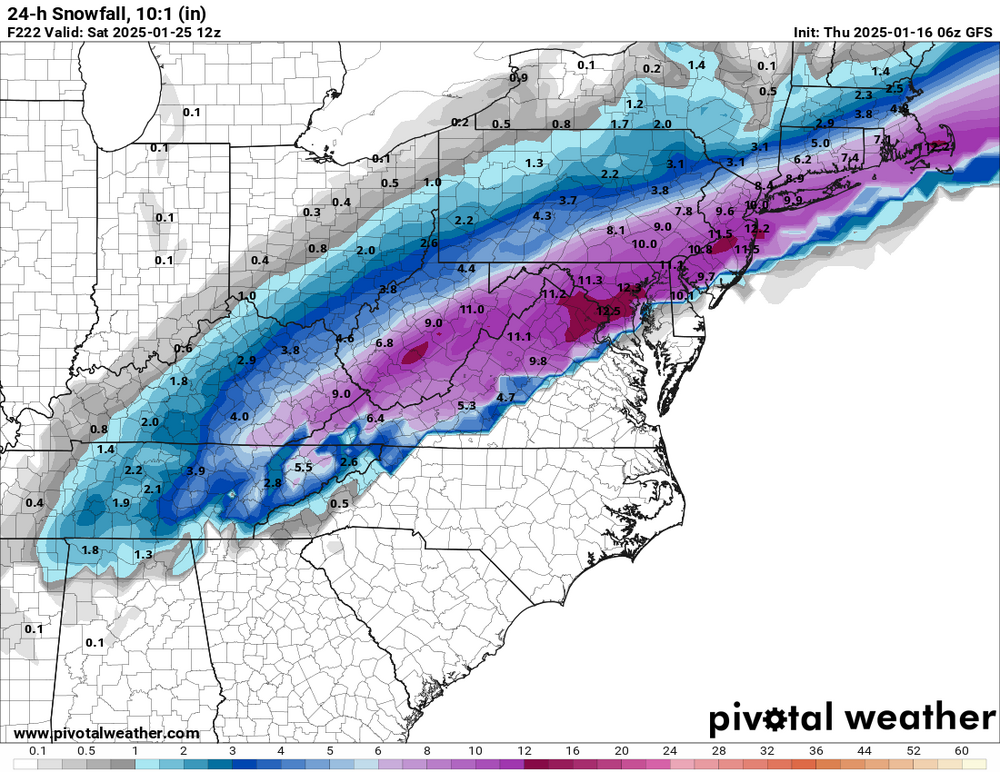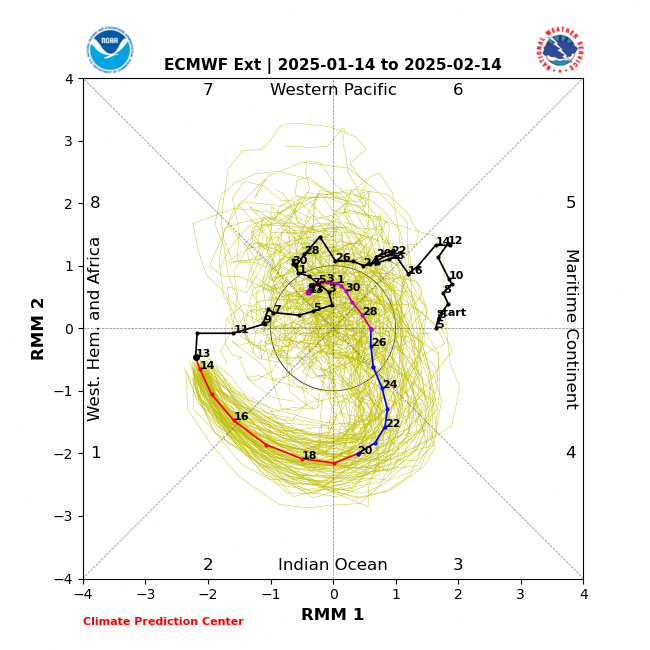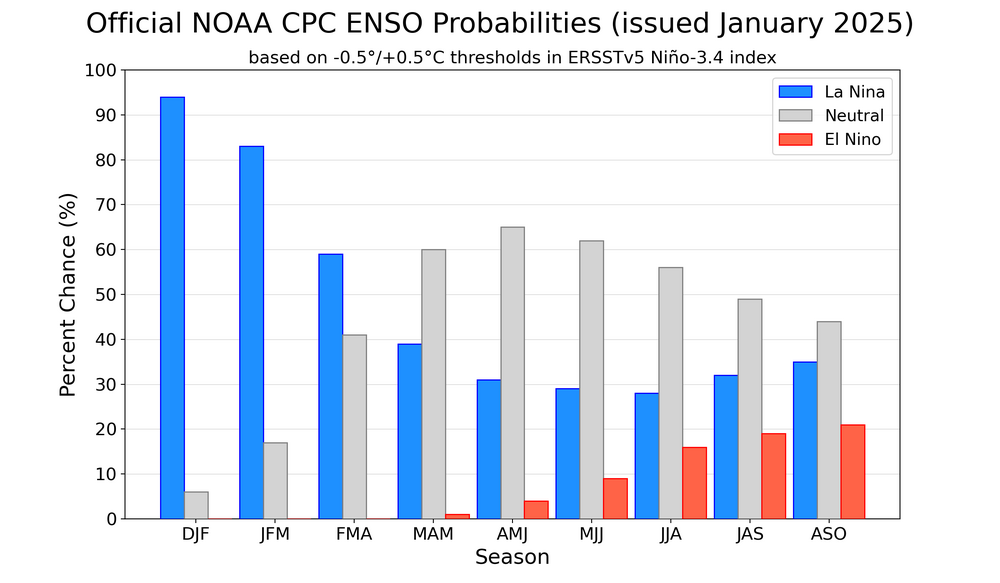
PhiEaglesfan712
Members-
Posts
1,070 -
Joined
-
Last visited
Content Type
Profiles
Blogs
Forums
American Weather
Media Demo
Store
Gallery
Everything posted by PhiEaglesfan712
-
2024-2025 La Nina
PhiEaglesfan712 replied to George001's topic in Weather Forecasting and Discussion
Looks like we're headed for a continuing la nina, a la spring 2022, rather than a flip to el nino like 2006 and 2009. In those years, the la nina had already peaked by February, setting the stage for an el nino to form the following season. -
2024-2025 La Nina
PhiEaglesfan712 replied to George001's topic in Weather Forecasting and Discussion
Too early to tell, but tea leaves say a 2nd year la nina is more likely. Either that or an ENSO neutral season. The IRI wouldn't have such high odds on a la nina this early in the ballgame. -
E PA/NJ/DE Winter 2024/25 Obs/Discussion
PhiEaglesfan712 replied to JTA66's topic in Philadelphia Region
I still think the first 10-15 days of February will be snowy, but I have a feeling this winter will come to an end fairly early. Watch us get something like spring 2010, where March was warm and the first half of April was summerlike. -
1/19/25 Eagles Playoff Winter Storm obs
PhiEaglesfan712 replied to Ralph Wiggum's topic in Philadelphia Region
It was 20 years ago today. The last snow playoff game before this one, the Philadelphia Eagles defeated the Atlanta Falcons in the NFC Championship Game. -
2024-2025 La Nina
PhiEaglesfan712 replied to George001's topic in Weather Forecasting and Discussion
20 years ago, the clipper turned Nor'easter: Prior to Sunday, this was the last time the Philadelphia Eagles played in a snow game in the playoffs. They defeated the Atlanta Falcons in the NFC Championship Game, to reach Super Bowl XXXIX. -
2024-2025 La Nina
PhiEaglesfan712 replied to George001's topic in Weather Forecasting and Discussion
-
2024-2025 La Nina
PhiEaglesfan712 replied to George001's topic in Weather Forecasting and Discussion
Yeah, I had no idea it could snow in places like New Orleans and Jacksonville, lol. -
2024-2025 La Nina
PhiEaglesfan712 replied to George001's topic in Weather Forecasting and Discussion
Very bad for winter lovers in the SE, but this should be good for the mid-Atlantic and especially NE, which should have above average precip for the first half of Feb. -
Sunday 1/19 Eagles Game Snow and Stuff
PhiEaglesfan712 replied to Ralph Wiggum's topic in Philadelphia Region
Last Conference Championship Game appearance Texans - None (first season of operation was 2002) Browns - 1989 Dolphins - 1992 Cowboys - 1995 -
Sunday 1/19 Eagles Game Snow and Stuff
PhiEaglesfan712 replied to Ralph Wiggum's topic in Philadelphia Region
January 27, 2011 is one. I can't remember if there has been any since then. -
2024-2025 La Nina
PhiEaglesfan712 replied to George001's topic in Weather Forecasting and Discussion
Eagles snow game, I'm so excited! -
Sunday 1/19 Eagles Game Snow and Stuff
PhiEaglesfan712 replied to Ralph Wiggum's topic in Philadelphia Region
I've seen 6. I just missed out 87 and 88, which would have been 8. The 2005 one, of course, was the NFC Championship Game against the Falcons. -
The 2013 one is the closest to the conditions we will have on Sunday. That was the famous LeSean McCoy snow game, and Stafford's passing numbers were down that day, for what it's worth.
-
Sunday 1/19 Eagles Game Snow and Stuff
PhiEaglesfan712 replied to Ralph Wiggum's topic in Philadelphia Region
Eagles postseason snowstorms (2000-present) Wild Card 2000 vs. Tampa Bay Buccaneers 2004 NFC Championship vs. Atlanta Falcons (clipper turned Nor'easter) -
E PA/NJ/DE Winter 2024/25 Obs/Discussion
PhiEaglesfan712 replied to JTA66's topic in Philadelphia Region
-
E PA/NJ/DE Winter 2024/25 Obs/Discussion
PhiEaglesfan712 replied to JTA66's topic in Philadelphia Region
Thanks for this information. Now that I know you haven't created a thread for a big storm in 9 years (since the Big One in January 2016), if you create one, I know it's happening! -
2024-2025 La Nina
PhiEaglesfan712 replied to George001's topic in Weather Forecasting and Discussion
-
E PA/NJ/DE Winter 2024/25 Obs/Discussion
PhiEaglesfan712 replied to JTA66's topic in Philadelphia Region
The 2000 Wild Card game against Tampa was another. It snowed the day before (December 30th) and postponed my sister's birthday party to the following week. -
E PA/NJ/DE Winter 2024/25 Obs/Discussion
PhiEaglesfan712 replied to JTA66's topic in Philadelphia Region
Yeah, the 2000 Wild Card against Tampa and 2004 NFC Championship Game against Atlanta were some of my favorite games. I don't think we've had a snow game in the playoffs since those two. -
E PA/NJ/DE Winter 2024/25 Obs/Discussion
PhiEaglesfan712 replied to JTA66's topic in Philadelphia Region
I hope they're agreeing on an Eagles win and some snow. -
2024-2025 La Nina
PhiEaglesfan712 replied to George001's topic in Weather Forecasting and Discussion
Is this what happened in November 2011, which caused the torch winter of 2011-12? -
2024-2025 La Nina
PhiEaglesfan712 replied to George001's topic in Weather Forecasting and Discussion
Jan 2004 was very cold as well. At least where I live, it rivals some of the cold Januarys of the 1980s (1982, 1984, 1985). -
2024-2025 La Nina
PhiEaglesfan712 replied to George001's topic in Weather Forecasting and Discussion
I think February will be near normal temperaturewise, at least to the mid-Atlantic and Northeast (the Southeast might torch). The first 10-15 days will give good snow to the mid-Atlantic and Northeast. I think March is the month when the mid-Atlantic and Northeast will have the +5 torch. -
2024-2025 La Nina
PhiEaglesfan712 replied to George001's topic in Weather Forecasting and Discussion
-
E PA/NJ/DE Winter 2024/25 Obs/Discussion
PhiEaglesfan712 replied to JTA66's topic in Philadelphia Region
All I know is that 2001-02 was way worse than this winter. That was a dry torch that never really had a chance, which is why we got a drought emergency that went on for months on end. At least this winter is cold, and there is hope for snow. Heck, we even got a normal precip departure in December.


